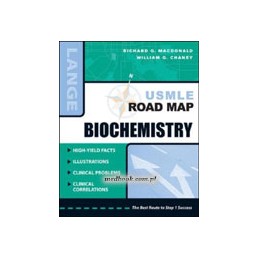- Obniżka


 Dostawa
Dostawa
Wybierz Paczkomat Inpost, Orlen Paczkę, DHL, DPD, Pocztę, email (dla ebooków). Kliknij po więcej
 Płatność
Płatność
Zapłać szybkim przelewem, kartą płatniczą lub za pobraniem. Kliknij po więcej szczegółów
 Zwroty
Zwroty
Jeżeli jesteś konsumentem możesz zwrócić towar w ciągu 14 dni*. Kliknij po więcej szczegółów
Publishers Note:: Products purchased from Third Party sellers are not guaranteed by the publisher for quality, authenticity, or access to any online entitlements included with the product.
A premier tool for course review and USMLE preparation that distills the essential facts within biochemistry and helps students master the required content
Youll never find an easier, more efficient, and more focused way to ace biochemistry and biochemistry-related questions on the USMLE and course examinations than the USMLE Road Map. Designed to provide maximum learning in minimum time, this fully updated USMLE Road Map offers a concise, creative, and well-illustrated approach to mastering biochemistry.
Opis
